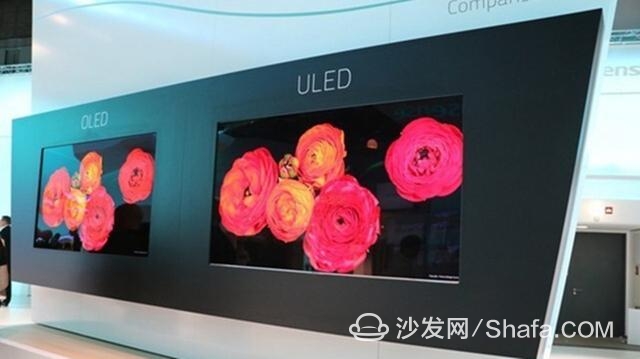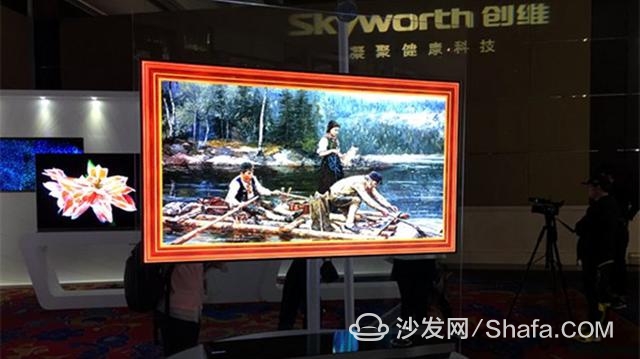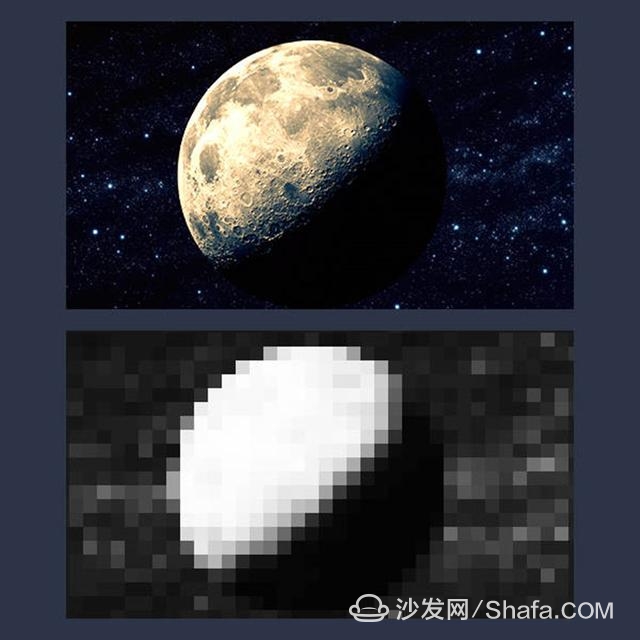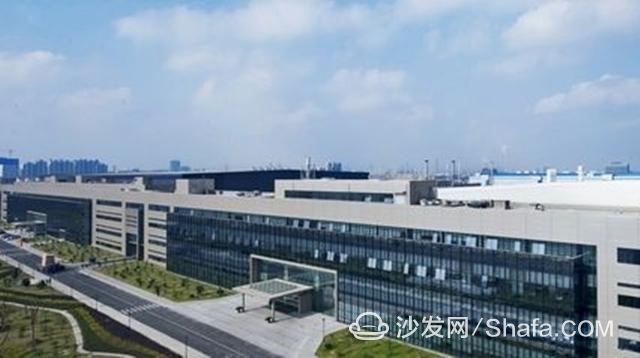
On the other hand, compared with Skyworth's main OLED technology, Hisense has been promoting its own ULED TVs, trying to compete with OLED TVs with lower prices and more accurate market positioning.
However, in the face of mature OLED technology, ULED can still maintain its leisurely attitude?
The new breakthrough technology OLED is destined to change the full name of the industry OLED called organic light-emitting diodes, and unlike traditional LED, OLED has self-luminous features, on the one hand without backlight support, and in terms of contrast, brightness, color gamut and viewing angle More competitive.
At the same time, OLEDs do not have to be fixed in glass panels like LEDs. At the same time, because they do not require backlight support, OLEDs have the advantages of being lighter, thinner, simpler in structure, and lower in power consumption than traditional liquid crystals.
In the afternoon of April 12th, Beijing time, Skyworth, the representative of OLED in China, released a Wallpaper TV with a future TV format. Utilizing the characteristics of self-luminous and flexible OLEDs, the thickness of the screen is compressed again. It is as thin as paper, and the magnetically-absorbed screen is attached to the wall like a mural.

ULED is essentially LCD but the regional dimming is worthy of recognition. However, compared with those advantages that are enough to change the industry, the reason why OLED can not be mass-marketized nowadays is more straightforward. That is the “sale priceâ€.
For an emerging technology, it is naturally difficult to control the yield and cost, so the price has become an enemy that has to face the OLED marketing strategy. However, it is precisely because OLED is not widely available today, so it gives traditional LCD panels a chance to breathe.
ULED, as an upgraded LED product, promotes the use of new backlight technology to ensure no loss of color saturation, contrast, and brightness in the OLED.
In fact, it was discovered after the hand that the so-called ULED only enhanced the backlight of the quantum dots and covered a film of quantum dot material on the ordinary LED backlight, which is still essentially an LCD screen, while the ULED still needs the backlight and the LCD glass. , just in the area of ​​backlighting more dimming.
By using the regional dimming technology, the screen can be changed from a whole to 240 blocks, and each block can independently control the brightness of the backlight, so the contrast ratio can be set to one million to one.

For domestic consumers, ULED is just a dessert before the popularity of OLED. However, currently, the price of Hisense's 65-inch ULED TV is about 16,000 yuan, which is nearly twice the price of the same type of LED TV on the market.
Behind ULED's optimization of the backlight, Hisense's efforts are worthy of recognition, but now it seems that the emergence of ULED is more like playing the conceptual hype. With the large-scale price cuts of online sales platforms, it can be seen that the technology is actually There is no such high premium ability.
Panel makers hold the color TV industry to determine the direction of the product upstream For Hisense, it is certainly clear that OLED is the future direction of development, even if the LED into ULED or other forms, have failed to get rid of the limitations of traditional LCD. It is unavoidable that the LCD TV screen needs backlighting, which is a congenital physical defect, and the factors such as afterimage, response speed, tailing time, and unreal color cannot be changed.
So why does Hisense still stick to ULED that cannot see the future?
The fundamentals, whether it can enter the OLED camp is not a color TV maker alone can make a choice, the relationship behind the entire product supply chain.
For example, Skyworth, a representative of domestic OLED TVs, has been able to achieve this result because, on the one hand, Skyworth and LG Display have capital-level cooperation, and both companies also have joint venture panel factories in Guangzhou. Therefore, Skyworth acquires OLED display technology with relatively advantages.

Therefore, Hisense does not want to do OLED, but its panel suppliers are not as strong as LG Display in the OLED technology field. Even if they barely do OLED screen TV, the stickiness of the cost and effect will be greatly reduced.
ULED's limited potential Faced with the choice of the industry, there was once a saying called "Internal Banks to buy plasma, and amateurs to buy LCD." Perhaps this sentence now seems to have a hint of black humor, but it has become Panasonic's gambling failure of plasma TVs.
The original liquid crystal display performed poorly in terms of black, contrast performance, etc., and it was seriously trailing when displaying dynamic images, making everyone believe that plasma is the future of television. Panasonic is no exception and has been sticking to the plasma camp. However, this insistence led to Matsushita's cumulative loss of approximately 1.5 trillion yen in the two years ending in 2012.

And now Hisense seems to be facing this choice, as OLED technology continues to mature, is to continue to adhere to ULED, or take advantage of the shift to OLED will become the decision Ting Road.
For Hisense, perhaps ULED can still bring considerable benefits in a short period of time, but in essence traditional LCD panels are being replaced by OLEDs. Even if ULED continues to innovate, it is still unable to shake off the fate of technological change.
Perhaps Hisense will eventually enter the OLED camp, but before that, I believe Hisense will fully develop the potential of traditional LCDs.
Smart TV/box information can focus on smart TV information network sofa butler (http://), China's influential TV box and smart TV website, providing information, communication, TV boxes, smart TVs, smart TV software, etc. Answering questions.
3V Lithium Fluorocarbon Series Batteries
3V Lithium Fluorocarbon Series Batteries use fluorocarbon material as the battery positive electrode. The fluorocarbon material has high thermal and chemical stability. It does not decompose at high temperature ≤600℃, and does not crystallize at low temperature. The battery operating temperature range can reach -40~125℃ ; Its chemical stability ensures the safety of the battery, so that the battery has a higher safety performance when short-circuit, collision, and extrusion, and has the characteristics of explosion-proof and spontaneous combustion. Our company uses self-developed electrolyte to make the battery life more than 10 years.
Our BR series button batteries are conventional high and low temperature resistant button batteries, and the working temperature is -40℃~+85℃
Accepts customized upgraded version of high and low temperature resistant button battery, working temperature is -40℃~ +125℃
Battery application range: It can be used in fields that have strict requirements for high and low temperatures and high energy density. For example, automobile tire pressure gauge (TPMS) battery, industrial control motherboard battery, computer motherboard battery, smart instrument battery, oil field drilling platform emergency equipment power supply, marine life-saving flasher, implantable medical battery, etc.
3V Lithium Fluorocarbon Series Batteries,Cells Coin Cells For Computer Motherboard,Wide Working Temperature Rang Coin Batterise,Coin Cells Long Lasting For Toys
Shandong Huachuang Times Optoelectronics Technology Co., Ltd. , https://www.dadncell.com